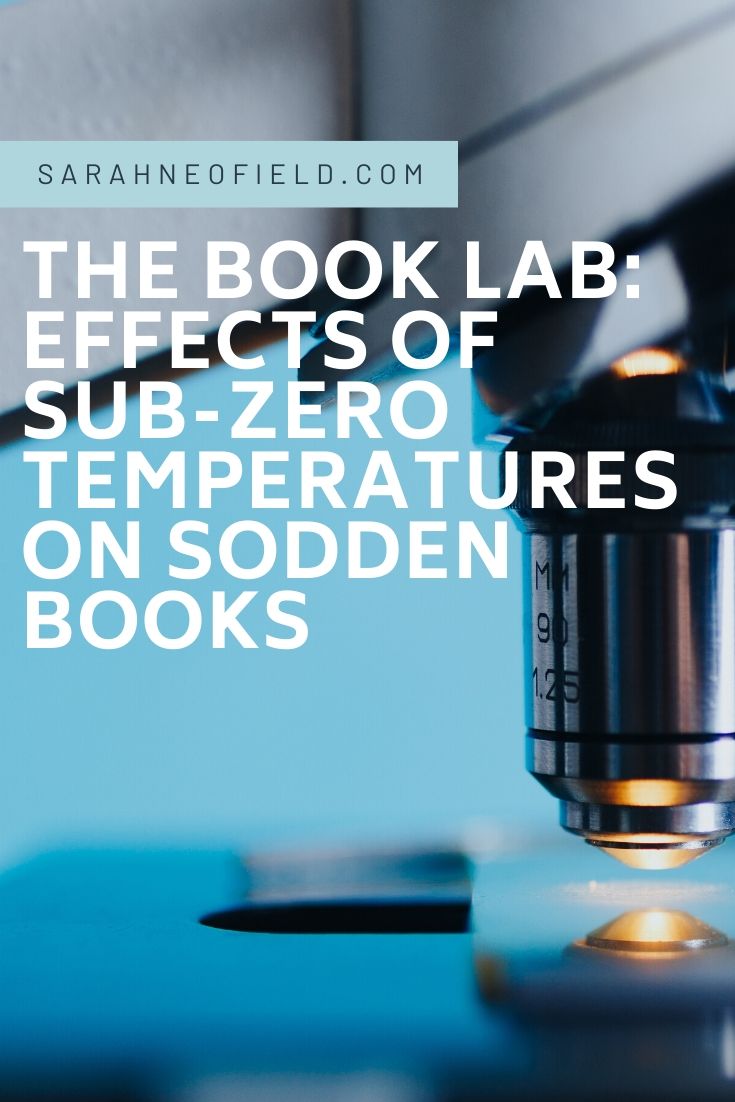Welcome to the Book Lab! Now, it is a well-known fact that academics are forever spilling things on paper. So it is fitting that an academic colleague told me a very interesting rumor she heard: that if you accidentally get a book wet (bath/shower/reading whilst washing the dishes – I don’t know how you do this, please let me know!) you can revitalise it by putting it in the freezer.
I scoffed at this quite profusely at first. It sounds, I’m sure you’ll agree, ludicrous.
My colleague was unable to recall whether one was supposed to put the book in a plastic bag tied tightly or not. But then I thought, let’s go all Myth Busters on this and perform a lovely experiment, complete with a control sample and everything. And hell, why not write it up as (well, an approximation of) an academic report on the matter?
Behold:
The Effects of Sub-Zero Temperatures on Sodden Books: A Preliminary Experiment
Introduction
Getting books wet has long been the bane of most people’s existence (Sandmore, 2008). The researcher has observed such events somewhat anecdotally on a number of occasions, including the devastating spillage of pink lemonade in a schoolbag at the age of eight, which damaged a Suzuki violin book and a copy of Charlie and the Chocolate Factory.
The ruination of books by excessive moisture is estimated to cost the economy $100,000,000,000,000,000.01 each year*.
This paper reports on an experiment designed to test the hypothesis that books placed in the freezer will be remedied of water damage.
*Badly estimated.
Methods


In order to test this hypothesis, two books were placed in a kitchen sink and submerged in water in order to replicate the sort of day-to-day water damage a book may undergo. This was achieved by the author/chief researcher running 54mm of water into the sink and pressing the book down firmly with both hands.
The subjects were two unwanted books, randomly selected from the researcher’s collection. One was a book that came with a motherboard. The other was a vegetarian cookbook that smelled weird (and smells even weirder now that it is wet).


Paper type, thickness, etc. were not controlled for in this experiment and are limitations that future studies that aim to replicate this experiment should address.*
*Who am I kidding? Do not attempt to replicate this experiment. Not even for “science”.

The two books were then placed in the freezer – one sealed in ziplock bags and cling wrap, the other uncovered.
Results
Observe Table 1, “Book Wetness” below.

After one hour, both books were still sodden.
The unsealed book was covered in frost.
After one night, both books were still damp.
After 24 hours, the books were removed from the freezer, and turning of the pages was attempted. The unsealed book (the motherboard book) tore upon application of force. The sealed book behaved perfectly.
After one week out of the freezer, the sealed book proved to be in the same or substantially similar condition to its original state, while the unsealed book was damaged irreparably.
Discussion

The above results support the hypothesis that books placed in the freezer will be remedied of water damage with the caveat that the book must be sealed in plastic prior to its placement in the freezer.*
On the other hand, given the fact that I used two different books of two very different kinds of paper, this experiment shows nothing at all.
I guess the real lesson is, don’t read in the bath/shower/whilst doing the dishes.
*Disclaimer: Sarah takes no responsibility for any damage to books “remedied” in this fashion. Despite her best attempts to (jokily) follow the scientific method, the above study does not involve a significant enough sample to be statistically reliable.
**Additional Disclaimer: This method is definitely not applicable to ereaders!

The chart was wonderfully done. And I’m glad to know what to do the next time I drop a book in water. Thank you so much!
Hahah, so glad you found it “helpful” Debra! The chart is one of my finest, I must say!